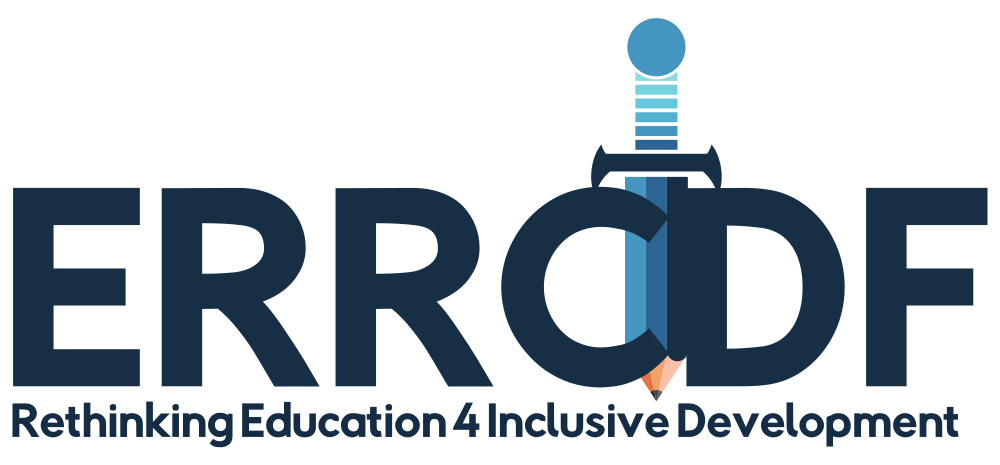The Impact of Artisanal Mining on Career Development of Adolescents in Zimbabwe
DOI:
https://doi.org/10.38140/ijrcs-2022.vol4.04Keywords:
Artisanal mining, Adolescents, Career development, Child labour , Human rights, Child abuse, SafetyAbstract
The research explored the impact of artisanal mining on the career development of adolescents at three selected schools in Imbizo District, Bulawayo Metropolitan Province. Interpretivism research philosophy was employed in the study, and a qualitative research method was used. The phenomenological research design was adopted for the study. The sample comprised fifteen school children aged between 14 to 20 years, and six teachers were selected from schools in Imbizo district in Bulawayo province, Zimbabwe, using purposive sampling. Due to COVID-19 regulations, interviews were telephonically, and focus group discussions were conducted online. Interviews were used to collect data from children, while focus group discussions were used to collect data from teachers. The findings revealed that causes of child involvement in artisanal mining include influence from society, poverty, drugs, adventure and the COVID-19 outbreak. The research findings revealed that child involvement in mining brought undesirable behavioural traits such as anti-social behaviour, poor academic performance, health and safety risks and different forms of abuse. Strategies suggested by teachers to mitigate child involvement in illegal mining encompassed legalising the small-scale mines, life skills education, educational support to all vulnerable children, community awareness campaigns, non-governmental organisations (NGOs) and government involvement. The children suggested that the government could help by providing them with basic needs like food and paying for their schools and stationery.
References
Aizawa, P. (2013). Women and Children in mining. Bouston: Houghton Publishers
Balchin, K. (2019). The growing battle between mining and economy. United States Institute of Peace: International Network for Economics and Conflict.
Bandura, A. (2010). Self?efficacy. John Wiley & Sons. https://doi.org/10.1002/9780470479216.corpsy0836
Best, J., & Kahn, J. V. (2006). Research in education. Pearson Education Inc.
Buhori, J. (2016). Child Labour in Artisanal and Small Scale Mining: The Case of North Mara Mine. The Open University of Tanzania.
Charmaz, K. (2011). Grounded theory methods in social justice research. In N. K. Denzin and Y. S. Lincoln (Eds.), The SAGE handbook of qualitative research (pp. 359-380). Thousand Oaks, CA: SAGE
Bryceson, D.F. (2015). Youth in urbanising mining settlements. Routledge.
Chikoko, W., Chikoko, E., Muzvidziwa, V.N., & Ruparanganda, W. (2016). Non-governmental organisations’ response to substance abuse and sexual behaviours of adolescent street children of the Harare Central Business District. African Journal of Social Work, 6(2), 34-44.
CNRG. (2013). Youths in Zimbabwe’s artisanal mining sector. Zimbabwe Centre for Natural Resource.
Cresswell, J. W. (2013). Qualitative enquiry and research design: Choosing among five approaches (4th ed). Thousand Oaks: Sage.
Creswell, J. W., & Creswell, J. D. (2018). Research design: Qualitative, quantitative and mixed methods approach (5th ed.). Thousand Oaks: Sage.
Ettekal, I., & Ladd, G. W. (2015). Developmental pathways from childhood aggression–disruptiveness, chronic peer rejection, and deviant friendships to early?adolescent rule breaking. Child development, 86(2), 614-631. https://doi.org/10.1111/cdev.12321
Government of Zimbabwe. (2013). Child Labour. Government Printers.
Hiebert, B., Borgen, W.A., & Schober, K. (2010). Career development: The role of guidance and counselling in fostering an increased range of educational and career alternatives. Article for TVETipedia. https://www.researchgate.net/publication/301985848_Orienting_Educators_to_Contemporary_Ideas_for_Career_Counseling_An_Illustrative_Example
Hilson, G. (2011). Artisanal mining, smallholder farming and livelihood diversification in rural sub-Saharan Africa: An introduction. Journal of International Development, 23, 1031–41. https://doi.org/10.1002/jid.1829
Hilson, G. (2016). Artisanal and small-scale mining and agriculture: Exploring their links in rural sub-Saharan Africa (pp. 24-24). International Institute for Environment and Development..
Hilson, G., Hilson, A., Maconachie, R., McQuilken, J., & Goumandakoye, H. (2017). Artisanal and small-scale mining (ASM) in sub-Saharan Africa: Re-conceptualizing formalisation and ‘illegal’activity. Geoforum, 83, 80-90. https://doi.org/10.1016/j.geoforum.2017.05.004
Human Rights Watch (2015). What … if something went wrong? Hazardous child Labor in small-scale gold mining in the Philippines. New York Human Rights Watch.
ILO. (2013). Uganda National Child Labour Survey Report 2011-2012: National Labour Force and Child Activities Survey 2011-2012. International Labour Organisation.
IPEC (2013). Making progress against child labour: Global estimates and trends 2000-2012. International Labour Organisation.
Jakaza, T. N., & Nyoni, C. (2018). Emerging dynamics of substance abuse among street children in Zimbabwe. A case of Harare Central Business District. African Journal of Social Work, 8(2), 63-70.
Ismawat, P. (2018). Mining: Problems and remedies. Regency Publications.
Kumar, A., & Chakraborty, B. S. (2016). Interim analysis: a rational approach of decision making in clinical trial. Journal of advanced pharmaceutical technology & research, 7(4), 118-122. https://doi.org/10.4103%2F2231-4040.191414
Lahey, B. (2002). Essentials of psychology. McGraw-Hill Publishers.
Mabhena, C. (2012). Mining with a ‘Vuvuzela’: Reconfiguring artisanal mining in Zimbabwe and its implications to rural livelihoods. Journal of Contemporary African Studies, 30(2), 219–33.
Maconachie, R., & Binns, T. (2007). Farming miners or mining farmers? Diamond mining and rural development in post-con?ict Sierra Leone. Journal of Rural Studies, 23(3), 367– 80.
Makewa, P., & John, P. (2013). Effective schools as a dropout prevention strategy. NAASP Bulletin.
Mganda, P., & Omandi, D. (2010). Factors influencing girls’ dropout in rural Kenya. Panguea Publication.
Majoko, T. (2018). Inclusion of Children with Autism Spectrum Disorders in Mainstream Primary School Classrooms: Zimbabwean Teachers' Experiences. International Journal of Special Education, 33(3), 630-656. https://eric.ed.gov/?id=EJ1196716
Moyo, S. (2010). Changing agrarian relations after redistributive land reform in Zimbabwe. The Journal of Peasant Studies, 38(5), 939–66. https://doi.org/10.1080/03066150.2011.634971
Myers, M. D. (1997). Qualitative research in information systems. MIS Quarterly, 21, 241- 241.
Ncube, N. (2015). Small-scale miners bemoan high fees. The Sunday News.
Neuman, S. (2019). Resource Policies and Small-Scale Gold Mining in Zimbabwe. Resources Policy, no. 34: 39–44.
Oxfam, (2017). Natural resources and the community: A guide for mediation practitioners. United Nations.
Pajarez, D. (2017). Overview of child labour in the artisanal and small-scale mining sector in Asia and Africa. Dylan O’Driscoll University of Manchester
Phiri, S. (2009). Impact of artisanal small scale gold mining in Umzingwane District (Zimbabwe): A potential for ecological disaster [Master Thesis University of the Free State]. University of the Free State.
Scooner, B. (2015). Small-scale mining within the SADC region 84 Mining Minerals and Sustainable Development. Santren/ITDG.
Spiegel, R. (2017). Small-scale mining: A review of the issues. World Bank.
Super, D. E. (2010). The lifespan, life space approach to career development. Jossey Bay.
Travis, E. (2011). Assessing the child in labourers situation. Oxford University Press.
UNICEF (2015). State of the world’s children: Children under threat. UNICEF
UNICEF, (2018). Child Poverty in Afric: Situation and Trends Analysis. UNICEF Maputo.
United Nations, (2015). Universal Declaration of Human Rights. United Nations.
United Nations (2019). Universal Declaration of Human Rights. United Nations.
UNFPA (2013). Strategy on adolescents and youth: Towards realising the full potential of adolescents and youth. https://www.unfpa.org/sites/default/files/resource
Willig, C. (2001). Introducing Qualitative research in Psychology: Adventures in theory and Method. Open University press.
World Vision (2013). Child miners speak: Key findings on children and artisanal mining in Kambove. World Vision DR Congo.
WHO (2019). Health among women and children report. World health Organisation, Geneva.
Zimbabwe Environmental Law Association. (2011). Extractive Industries Policy and Legal Handbook: Analysis of the key issues in Zimbabwe’s mining sector. Zimbabwe Environmental Law Association.
Downloads
Published
How to Cite
Issue
Section
License
Copyright (c) 2022 Sikhanyisiwe Nkomo , Phumuzani Mpofu

This work is licensed under a Creative Commons Attribution-NonCommercial-NoDerivatives 4.0 International License.






